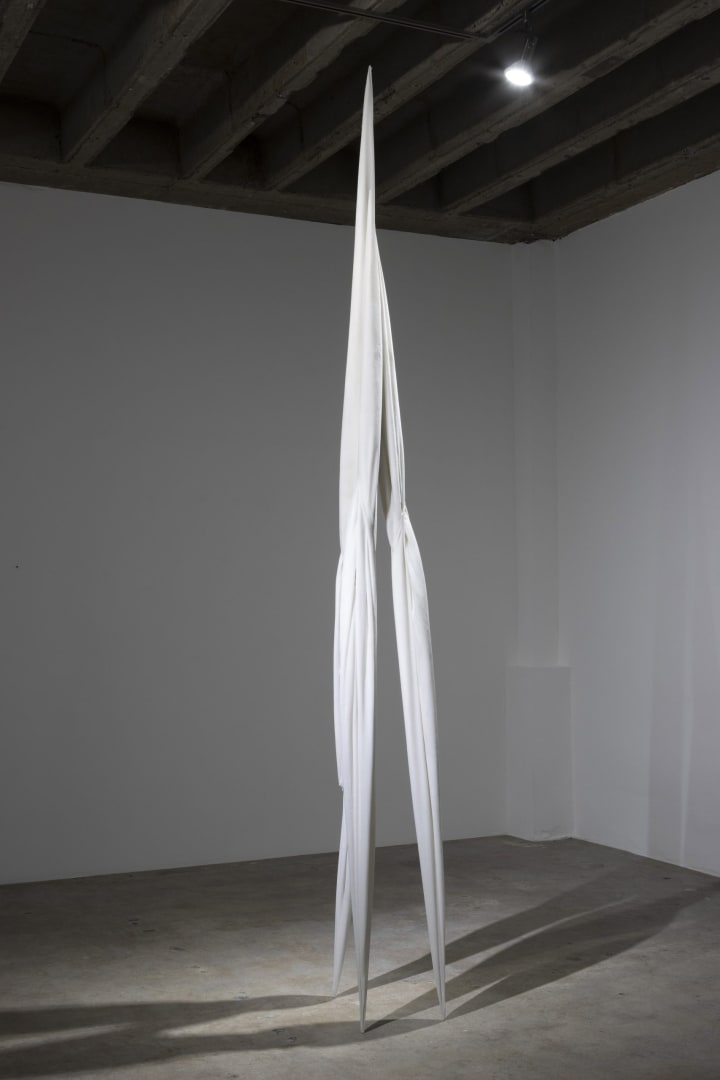Last spring, Ping made a show at Ramiken in Bushwick that felt, like this one, as if the viewer was transported to an otherworldly garden, his works blooming in space as if formed by a yet unknown natural process. If we can stretch the meaning of creating art to something more like growing a fingernail, or bones forming inside a body, if we can go that far outside of the false dichotomy between artificial and natural, Ping’s sculptures will reward us with a new formal experience, unburdened by self consciousness, and glowing with sublime eroticism made possible by an a priori state of purposeful beinglessness. The sculptures are made from canvas, with a slit cut and the material pulled through itself in cascading knots tied in what appears to be synthetic ivory, shaped by the implied gravity of a thousand years, frozen in subcutaneous resin. Delicate folds are preserved in the rock like a permanent curtain wisp. The exhibition space becomes a cave of intentional stalagmites. A forest of wrinkled ghosts.
Mote is the smallest possible amount of something. Elemental purity. Monocarp is a plant that reproduces only once, and expires in the process. A monocarp has to die, in order for its kids to live. A husk, bleached in the sun. In Ping’s work the abstract is not decanted from the objective. The facts of the material suggest the apotheosis of the modern/minimal teleology: the monochrome painting. The now-abandoned canonical history of contemporary art, presented for so long as quintessintially American, is by and large the history of American painting. What used to be a stretch – to interpret American art as inherently reflective of a Puritanical subconscious – is now, in retrospect, plain as day. Ping starts with the fundamental building block of that dear old canon – a canvas, stripped bare to a single color. Where he takes that is beyond the bounds of both painting and sculpture, all the way to a place where the repressed is welcomed back into the fold.
At Ramiken, New York
until November 6, 2021

